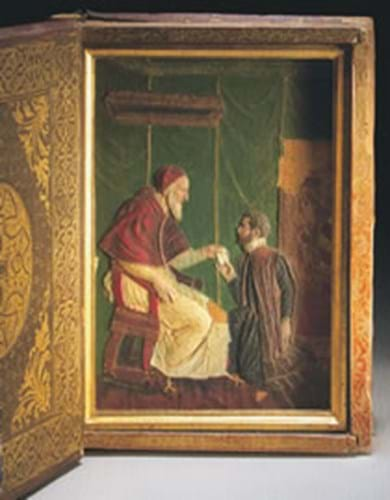
The first two parts of the remarkable library assembled by the legendary book dealer Bernd Hartmut (later Bernard) Breslauer since his flight from Nazi Germany provided what my colleague Ian McKay termed "an unparalleled bibliographic treat" on March 21-23 with an outstanding collection of books printed on vellum still to be sold on June 28-29.
However, with little fanfare, the auctioneers sold what might well prove the highlight of the collection as part of a mixed consignor 'doorstop' catalogue of European furniture and furnishings offered in New York on May 17-18. This was a 103/4in (27cm) high by 81/4in (21cm) wide polychrome decorated wax relief portrait of Pope Pius V by Giovanni Battista Capocaccia.
The artist, a specialist in these so-called stucco portraits who worked in Rome, was highly regarded by his contemporaries but his work is extremely rare. Indeed this relief with the inscription Opvs Capocaccia to the lower left of the composition is one of only a handful of confidently attributed works and the only one to carry a signature.
Pius V is modelled seated on a red and gilt upholstered chair beneath a baldachin receiving a letter from a kneeling figure dressed in black and brown robes.
He has recently been identified by Sotheby's cataloguer and the art historian Frank Dabell as Pius V's secretary Teodosio Fiorenzi, based on an unpublished portrait of the Marchigan prelate, who later became the Bishop of Osimo. Mr Dabell will shortly publish an article on Capocaccia based on his research.
Remarkably, Giorgio Vasari (1511-74), the great chronicler of the Italian Renaissance, almost certainly mentions and praises this relief (and another work depicting Cardinal Alessandrino) in the second edition of his Vite. Among other things this allows the relief and binding to be precisely dated to between January 7, 1566, the date of Pius V's election to the Holy See and the publication of Vite sometime the following year.
The rich colours and precise and sensitively modelled relief are also perfectly preserved. Despite some flaked losses, the material was extremely durable - the wax was mixed with gypsum and resin - and this example was protected by its red morocco leather box in the form of a gilt-tooled book that was almost certainly done by the Vatican bindery.
All of which intimated that the estimate of $20,000-30,000 might be somewhat lightweight. Stiff competition saw bidding soar to $415,000 (£210,400) plus premium, at which point it sold to Bond Street works of art dealer Daniel Katz.
Roland Arkell




